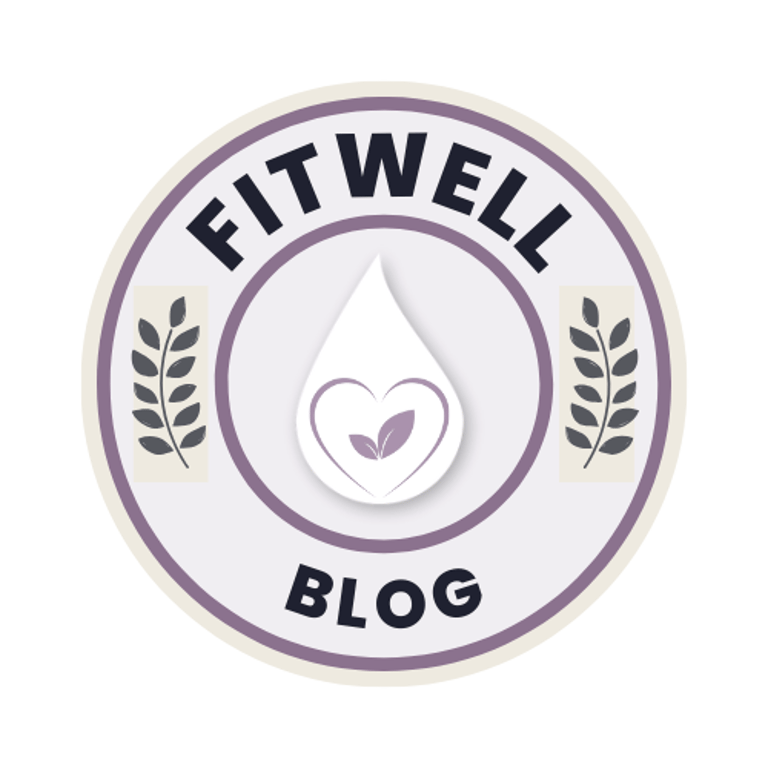Cardio vs Strength Training: Which is Best for Your Goals?
Cardio vs strength training—discover the benefits, myths, and best workout plans for your goals. Learn how to combine both for maximum results and long-term success.
FITNESSFEATURED
8/12/20255 min read


When it comes to fitness, one of the most common questions is: Should I focus on cardio or strength training? The truth is, the answer depends on your personal goals, lifestyle, and preferences.
In this guide, we’ll break down the benefits, drawbacks, and science behind each approach so you can make the best decision for your health and fitness journey.
This post contains affiliate links. That means if you click and purchase, we may earn a small commission—at no extra cost to you.

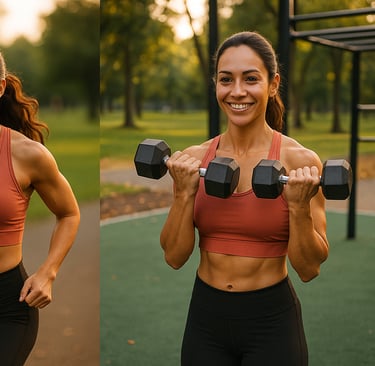
Understanding the Basics
What is Cardio?
Cardio, short for cardiovascular exercise, involves any activity that elevates your heart rate for a sustained period. Examples include running, cycling, swimming, dancing, and high-intensity interval training (HIIT). Cardio is best known for improving heart health, increasing endurance, and supporting calorie burn.
What is Strength Training?
Strength training (or resistance training) focuses on building muscle strength and endurance by working against resistance. This can be done using free weights, resistance bands, machines, or even your own body weight. It’s essential for increasing muscle mass, improving bone density, and boosting overall strength.


Benefits of Cardio
Improves cardiovascular health by reducing the risk of heart disease.
Supports fat loss by burning calories during workouts. A great pair of supportive running shoes like Brooks Ghost 17 can make all the difference in your cardio sessions, helping improve comfort, reduce injury risk, and boost performance.
Boosts endurance & stamina for daily activities and sports.
Reduces stress & improves mood through the release of endorphins.
Supports metabolic health and helps regulate blood sugar levels.


Benefits of Strength Training
Builds lean muscle which increases your resting calorie burn. If you train at home, a set of adjustable dumbbells like Lifepro Adjustable Dumbbells Set gives you dozens of weight options without taking up much space.
Strengthens bones & joints, reducing the risk of osteoporosis.
Improves posture and balance, enhancing daily movement. Weightlifting gloves like these can improve grip, reduce calluses, and support your wrists during lifts.
Helps with long-term fat management by boosting metabolism.
Enhances functional strength for everyday activities. For an extra challenge, a weighted vest like the ApexUp Weight Vest can add resistance to both cardio and strength workouts, helping build muscle and burn more calories.

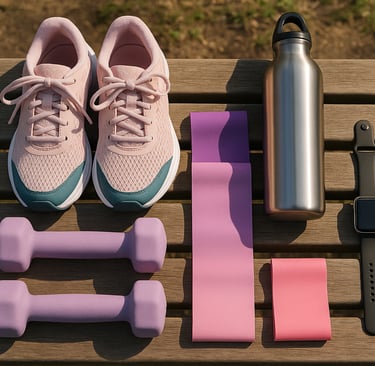
Cardio vs. Strength Training for Different Goals
Incorporating the right tools can make it easier to match your workouts to your goals. Resistance bands like Fit Simplify Resistance Loop Exercise Bands are perfect for blending strength and cardio in a compact, portable format, ideal for circuit sessions or when traveling. Low-impact cardio tools like a mini rebounder can be a joint-friendly way to boost endurance while still getting your heart rate up, making them great for at-home training or active recovery days.
Weight Loss
Cardio burns more calories during the workout, but strength training builds muscle, which increases calorie burn at rest. The best approach combines both.
Building Muscle
Strength training is essential, with cardio used in moderation for heart health.
Endurance
Cardio takes the lead here, but strength training helps prevent injury and improve performance.
Overall Health & Longevity
A balanced mix of cardio and strength training provides the greatest long-term benefits.


Common Myths Debunked
"Cardio kills muscle" – Not when balanced with strength training and proper nutrition.
"Strength training makes women bulky" – Building significant muscle mass takes time, effort, and specific training.
"You only need one type of exercise" – Variety is key for balanced fitness.
"Doing cardio means you'll lose weight fast" – While cardio can burn calories, sustainable fat loss comes from a combination of consistent training, balanced nutrition, and recovery — not cardio alone.
"Lifting weights is dangerous for beginners" – With proper form and progression, strength training is safe and highly beneficial for people at any fitness level.


How to Combine Cardio & Strength Training
Finding the right mix comes down to balancing recovery, performance, and your goals.
Alternate Days: Alternating days between cardio and strength allows each muscle group to recover while still keeping you active. For example, heavy leg training one day followed by a low-impact cardio session the next can reduce soreness while maintaining endurance. Example: 3 days of strength, 2–3 days of cardio.
Cardio After Strength: Preserve muscle strength by lifting first, then doing cardio. If you're wanting to do weights and cardio on the same day, it's always best to do weight first, then your cardio session after. Doing that makes sure that your muscles aren't tired while doing weights, allowing you to maintain good form and maximize strength gains.
Circuit Training: Combine both in one session for efficiency. Circuit training blends both styles into one workout — moving quickly between resistance exercises and short cardio bursts — which can save time and keep your heart rate elevated for the entire session.
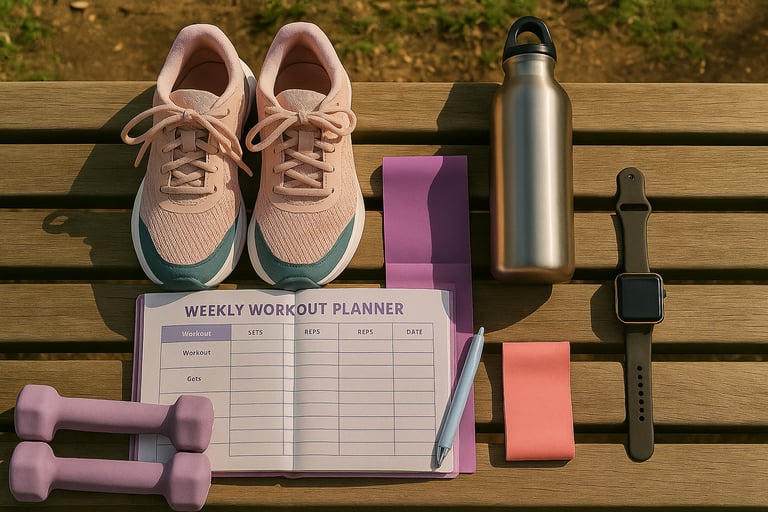

Sample Weekly Workout Plans
To make the most of these plans, consider using supportive tools that complement your workouts. Smart tech like the Apple Watch, FitBit, or Oura Ring can help track performance, recovery, and sleep — see our Top 5 Smart Wellness Devices blog post for detailed reviews.
For strength days, resistance training gear like adjustable dumbbells or kettlebells can expand your exercise variety, while a sturdy yoga mat provides comfort and stability during mobility or core sessions.
Beginner (2–3 days/week)
Day 1: Full-body strength (Strength: squats, push-ups, rows)
Day 2: Cardio (Cardio: brisk walking, light cycling, or swimming – 30 min)
Day 3: Rest or light activity (gentle yoga, stretching)
Intermediate (4–5 days/week)
Day 1: Upper body strength (Strength: bench press, rows, overhead press)
Day 2: Cardio (Cardio: jogging, cycling, or HIIT – 25–40 min)
Day 3: Lower body strength (Strength: squats, lunges, deadlifts)
Day 4: Cardio (Cardio: brisk walking, rowing, or intervals)
Day 5: Core & mobility or active recovery
Advanced (5–6 days/week)
Day 1: Upper body strength (Strength: bench press, pull-ups, dips)
Day 2: Cardio (Cardio: running intervals, cycling sprints)
Day 3: Lower body strength (Strength: heavy squats, hip thrusts, step-ups)
Day 4: Cardio + core (Cardio: HIIT circuits; Core: planks, Russian twists)
Day 5: Total body strength (Strength: clean & press, kettlebell swings)
Day 6: Endurance cardio or sport-specific training (Cardio: long run, swimming laps)
Day 7: Optional rest or gentle stretching

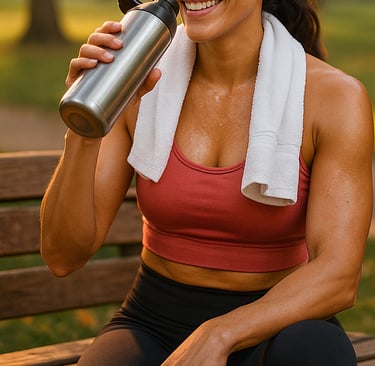
Recovery Matters
Recovery is just as important as training. Include rest days, get adequate sleep, and fuel your body with proper nutrition. Supplements like FIT, a bioactive precision peptide (oral) supplement, can help speed muscle recovery and reduce soreness. For optimal hydration after intense workouts, also consider Hydrated, a clean, sugar-free, dye-free electrolyte supplement — it helps to replenish electrolytes and support muscle function, helping you bounce back faster.


The Bottom Line
There’s no one-size-fits-all answer. The best workout plan is one you enjoy and can stick with consistently. Combining both cardio and strength training yields the most well-rounded results for health, performance, and longevity.
Product Roundup
Brooks Ghost 17 — High-quality running shoes
Hydrated, a clean, sugar-free, dye-free electrolyte supplement
Resources
Top 5 Smart Wellness Devices - blog post
© 2025 FitWell. All rights reserved.
This website may include affiliate links to various companies. When you make a purchase through these links, we may receive a small commission, at no additional cost to you.
Medical Disclaimer:
The information provided on this website is for educational purposes only and is not intended to diagnose, treat, cure, or prevent any disease. Always consult with a qualified healthcare professional before starting any new supplement, diet, or wellness program.
